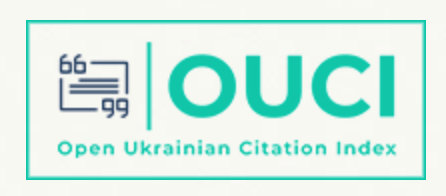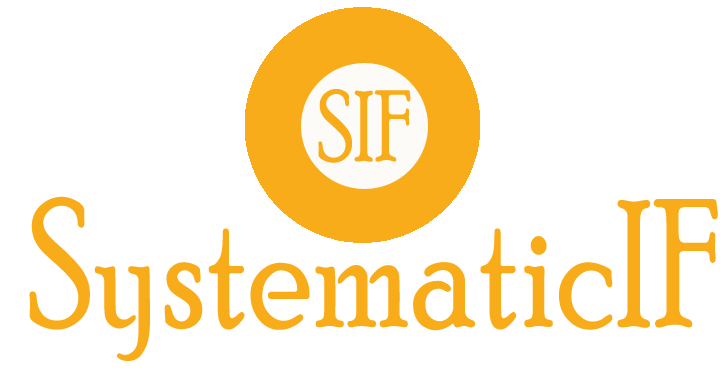Research of Assertiveness in Organization of the Time Perspective of Degree-Seeking Students in Higher Education
Abstract
The aim is to conduct empirical research and theoretical substantiation of assertiveness of degree-seeking students in higher education within the structure of time perspective. It was substantiated that assertiveness in the organization structure of time perspective is a flexible and constructive strategy and tactic of behavior, reflecting the life position and accompanied by temporal decentrations in the form of dominant representations about the psychological future and psychological past, which is reflected in the current moment of time. Methods. The participants of the research were full-time students of the 2nd and 3rd years of study at higher education institutions in Ukraine, aged from 18 to 20 years (M = 18.44; Me = 18.50; SD = 3.23), with a total number of n = 120 people. A valid and reliable psychodiagnostic toolkit adapted and tested on a Ukrainian sample was applied: “Personality Assertiveness Test” (PAT) (Sheinov, 2014); “Time Perspective Inventory” (TPI) (Zimbardo & Boyd, 1999), adapted by O. Senyk (2012); “Locus of Control” (LC) (Rotter, 1992) and statistical methods for processing empirical data. Theoretical methods were used to perform retrospective analysis, synthesis, and generalization of the main theoretical positions; a discussion was conducted; explanations and justifications of the obtained empirical results and conclusions were presented. Results. Three direct statistically significant correlations were identified between assertiveness and the parameters of “hedonistic present”, “future”, and locus of control. It was found that the correlation between assertiveness and the hedonistic present (rs = .283; p < .001) was the most significant and dependent, and accordingly, the most dangerous. This danger was explained by the fact that material values, which are partly the desire for immediate pleasure, can be understood as the meaning of flexible and constructive behavior of the subjects. A comparison of the studied parameters of the optimal profile (Group 1) with the parameters of the general profile (Group 2) was performed. A statistically significant advantage of the optimal profile in terms of assertiveness and internal locus of control was recorded. Discussion and сonclusions. It was summarized and explained that assertiveness occupies an important place in the structure of time perspective and performs a regulatory role. Educational process organizers were recommended to focus on developing this competence in the students.
Downloads
References
Alghamdi N. G. Anxiety and Assertiveness in Females: A Comparison of Medical and Non-Medical University Students. Mediterranean Journal of Social Sciences. 2015. Vol. 6(3). P. 84–89. https://doi. org/10.5901/mjss.2015.v6n3s2p84
Baird H. M., Webb T. L., Sirois F. M., Gibson-Miller J. Understanding the effects of time perspective: a meta-analysis testing a self-regulatory framework. Psychological Bulletin. 2021. Vol. 147(3). P. 233–267. https://doi.org/10.1037/bul0000313
Blynova O., Derevianko S., Ivanova O., Popovych I., Estay Sepulveda J. G. Professional relevance of potential labor emigrants. Revista Notas Históricas y Geográ- ficas. 2022a. Vol. 29. P. 88–106. https://www.revistanotashistoricasygeograficas. cl/index.php/nhyg/ article/view/435
Blynova O., Moiseienko V., Los O., Burlakova I., Yevdokimova O., Toba M., Popovych I. S. Assertiveness as a Factor of Students’ Choice of Behavior Strategies in Social Interaction. Revista Inclusiones. 2020. Vol. 7(4). P. 259–272. https://www.revistainclusiones. org/index.php/inclu/article/view/1551
Blynova O., Popovych I., Hulias I., Radul S., Borozentseva T., Strilets-Babenko O., Minenko O. Psychological safety of the educational space in the structure of motivational orientation of female athletes: a comparative analysis. Journal of Physical Education and Sport. 2022b. Vol. 22(11). P. 2723– 2732. https://doi.org/10.7752/jpes.2022.11346
Codina N., Castillo I., Pestana J. V., Valenzuela, R. Time perspectives and procrastination in university students: exploring the moderating role of basic psychological need satisfaction. BMC Psychology. 2024. Vol. 12(5). https://doi.org/10.1186/s40359-023- 01494-8
Golshiri P., Mostofi A., Rouzbahani S. The effect of problem- solving and assertiveness training on self-esteem and mental health of female adolescents: a randomized clinical trial. BMC Psychology. 2023. Vol. 1, P. 106. https://doi.org/10.1186/s40359- 023-01154-x
Chan S., Kwok W., Fung T. Psychometric properties of the Zimbardo time perspective inventory in Hong Kong adolescents. Time & Society. 2019. Vol. 1. P. 33–49. https://doi.org/10.1177/09614 63x16678250.28
Crowley C., Kapitula L. R., Munk D. Mindfulness, happiness, and anxiety in a sample of college students before and after taking a meditation course. Journal of American College Health. 2022. Vol. 70(2). Vol. 493–500. https://doi.org/10.1080/07448481 .2020.1754839
Jankowski K. S., Zajenkowski M., Stolarski M. What are the optimal levels of time perspectives? Deviation from the balanced time perspective-revisited (DBTP-r). Psychologica Belgica. 2020. Vol. 60(1). P. 164–183. https://doi.org/10.5334/pb.487
Loose T., Robiou Du Pont L., Acier D., El-Baalbaki G. Time perspectives mediate the relationship between personality traits and alcohol consumption. Time & Society. 2018. Vol. 28(3). P. 1148–1166. https:// doi.org/10.1177/0961463x18758515
Мойсеєнко В. В. Аналіз наукових підходів дослідження поняття “асертивності”. Науковий вісник ХДУ. Серія: Психологічні науки. 2017. Вип. 5(1). С. 170–175. URL: https://journals.indexcopernicus. com/api/file/viewByFileId/512907. pdf
Mordkovich O., Samohvalova O., Galtseva O. The Specifics of the Formation of the Temporal Competence of Students of Economic Profile. In: Solovev, D.B., Savaley, V.V., Bekker, A.T., Petukhov, V.I. (eds) Proceeding of the International Science and Technology Conference “FarEastСon 2019”. Smart Innovation, Systems and Technologies. 2020. Vol. 172. Springer, Singapore. https://doi.org/10.1007/978-981-15- 2244-4_43
Popovych I., Chervinska I., Kazibekova V., Vasylyk V., Verbeschuk S., Gniezdilova V. Young athletes’ time perspective as a factor in the development of sports motivation. Journal of Physical Education and Sport. 2022a. Vol. 22(10). P. 2427–2435. https://doi.org//10.7752/jpes.2022.10310
Popovych I., Halian I., Lialiuk G., Chopyk R., Karpenko Ye., Melnyk Yu. Research of young female handball players’ self-actualizing mental states. Journal of Physical Education and Sport. 2022b. Vol. 22(7). P. 1599– 1607. https://doi.org/10.7752/jpes.2022.07201
Popovych I., Hoi N., Koval I., Vorobel M., Semenov O., Semenova N., Hrys A. Strengthening of student youth’s mental health using play sports. Journal of Physical Education and Sport. 2022c. Vol. 22(6). P. 1384–1395. https://doi.org/10.7752/ jpes.2022.06174
Raskin P. M. Assertiveness. In: Management in Health Care. Palgrave, London. 1994. P. 228–241. https:// doi.org/10.1007/978-1-349-23156-0_14
Rotter J. B. “Cognates of personal control: Locus of control, self-efficacy, and explanatory style”: Comment. Applied & Preventive Psychology. 1992. Vol. 1(2). P. 127–129. https://doi.org/10.1016/ S0962-1849(05)80154-4
Senyk O., Abramov V., Bedan V., Bunas A., Hrechkosii M., Lutsenko O., Mandzyk T., Wittmann M. Differences in Time Perspectives Measured under the Dramatically Changing Socioeconomic Conditions during the Ukrainian Political Crises in 2014/2015. International Journal of Environmental Research and Public Health. 2022. Vol. 19. P. 7465. https:// doi.org/10.3390/ijerph19127465
Сеник О. Адаптація опитувальника часової перспективи особистості Ф. Зімбардо (ZTPI). Соціальна психологія. 2012. № 1–2(51–52). С. 153–168. https://www.researchgate.net/publication/ 280938555_Adaptacia_opituvalnika_casovoi_ perspektivi_osobistosti_F_Zimbardo_ZTPI
Sheinov V. P. Assertive behavior: advantages and perception. Journal of Modern Foreign Psychology. 2014. Vol. 3(2). P. 107–120. URL: https://psyjournals.ru/ en/journals/jmfp/archive/2014_n2/70122
Sheinov V. P. Assertiveness, Machiavellism, Lack of Protection from Manipulations and Psychological States of Teachers and Students. Psychology and Psychotherapy: Research Studys. 2019. Vol. 3(1). https://doi.org/10.31031/PPRS.2019.03.000551
Sprott W. J. H. [Review of A Dynamic Theory of Personality., by K. Lewin, D. K. Adams, & K. E. Zener]. Mind. 1936. Vol. 45(178). P. 246–251. http://www.jstor. org/stable/2250244
Stolarski M., Zajenkowski M., Jankowski K. S., Szymaniak K. Deviation from the balanced time perspective: A systematic review of empirical relationships with psychological variables. Personality and Individual Differences. 2020. Vol. 156, Article 109772. https://doi.org/10.1016/j.paid.2019.109772
Siu Y. F. N., Pichayayothin N. B., Law, S. C. Y. Cultural specificity of time perspective: Development and construct validation of the Thai Zimbardo Time Perspective Inventory (TH-ZTPI). Current Psychology. 2024. Vol. 43. P. 380–388. https://doi. org/10.1007/s12144-022-04162-z
Wachs S., Valido A., Espelage D. L., Castellanos M., Wettstein A., Bilz L. The relation of classroom climate to adolescents’ countering hate speech via social skills: A positive youth development perspective. Journal of Adolescence. 2023. Vol. 95. P. 1127–1139. https://doi.org/10.1002/jad.12180
Zimbardo P. G., Boyd J. N. Putting time in perspective: A valid, reliable individual-differences metric. Journal of Personality and Social Psychology. 1999. Vol. 77(6). P. 1271–1288. https://doi. org/10.1037/0022-3514.77.6.1271
Zimbardo P. G., Boyd J. N. Putting time in perspective: A valid, reliable individual-differences metric. In M. Stolarski, N. Fieulaine, W. van Beek (Eds.), Time perspective theory; Review, research and application: Essays in honor of Philip G. Zimbardo (pp. 17–55). Springer International Publishing/ Springer Nature. 2015. https://doi. org/10.1007/978-3-319-07368-2_2
Zimbardo P., Keough K., Boyd J. Present time perspective as a predictor of risky driving. Personality and Individual Differences. 1997. Vol. 6. P. 1007–1023. https://doi.org/10.1016/ s0191-8869(97)00113-x.23
Zinchenko S., Nosov P., Mateichuk V., Mamenko P., Popovych I., Grosheva O. Automatic collision avoidance system with many targets, including maneuvering ones. Bulletin of university of Karaganda. 2019. Vol. 96(4). P. 69–79. https://doi. org/10.31489/2019Ph4/69-79
Zinchenko S., Tovstokoryi O., Nosov P., Popovych I., Kyrychenko K. Pivot Point position determination and its use for manoeuvring a vessel. Ships and Offshore Structures. 2023. Vol. 18(3). P. 358– 364. https://doi.org/10.1080/17445302.2022.2 052480
Zhylin M., Mendelo V., Karpenko Ye., Samara O., Kampi Yu. Mental and behavioural disorders as a result of using alcohol and psychoactive substances. Revista de cercetare și intervenție socială. 2023. Vol. 81. P. 117–128. https://doi. org/10.33788/rcis.81.7
Authors who publish with scientific journal agree to the following terms:
• All scientific papers may be freely copied and distributed on any medium and in any format, provided that the references to the initial data of the scientific work are indicated.
• Authors retain copyright and grant the journal right of first publication with the work simultaneously licensed Creative Commons Attribution License .
• Authors are able to enter into separate, additional contractual arrangements for the non- exclusive distribution of the journal’s published version of the work (institutional repository, your website, monograph), with an acknowledgement of its initial publication in this journal.





































